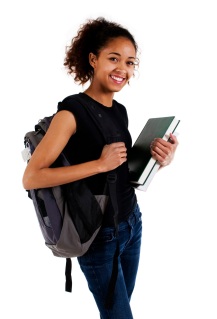Indian Higher Education Sector : The Way Forward
Achieving India’s demographic dividend will depend on our ability to provide a simple regulatory framework in
education that eliminates opportunities for rent seeking and low quality. Hence the recent initiative of the
Government to reform the regulatory regime is a welcome step. The four Bills presented to Parliament will
potentially overhaul the education set up in the country. Their cumulative impact would be the most significant
reform of the Indian Higher Education framework in the past 60 years.
While the Bill for permitting foreign universities to establish campuses in India, has garnered significant
attention and has been the subject of significant debate (politically and otherwise), the other Bills also have the
potential of altering, albeit more significantly the Indian regulatory framework dealing with education because
we believe they will lay the foundations for a more transparent, governance focused framework. While these
Bills are yet to become law, we will briefly review them.
The Prohibition of Unfair Practices in Technical Educational Institutions, Medical Educational
Institutions and Universities Bill, 2010
This is a truly welcome initiative that will not only improve governance but also go a long way in protecting the
interests of children and parents. It seeks to prohibit unfair practices in technical educational institutions,
medical educational institutions and universities. Its aim is to introduce greater transparency and governance
through mandatory disclosures regarding faculty, fees and infrastructure. It prohibits an institution from a)
demanding or accepting capitation fees or other charges in excess of those declared in its prospectus; and b)
admitting students without conducting admission tests specified by the appropriate authority. The Bill also
prohibits publishing or issuing advertisement based on false or misleading facts for inducing students to take
admission. The Bill prescribes penalties for indulging in practices prescribed as unfair in the Act. It is the first
time that such legislation has been proposed in the Education sector. It will be an essential component in an
education eco-system that is plagued with rent seeking and malpractices. The question for consideration though
is the ability and the willingness to implement the provisions of this Bill when it becomes a law.
The National Accreditation Regulatory Authority for Higher Educational Bill, 2010
This seeks to make accreditation by independent accreditation agencies mandatory for higher educational
institutions (HEIs), educational programs, and educational infrastructure. The Bill also provides for establishing
an independent statutory authority for the purpose, the National Accreditation Regulatory Authority (“NARA”),
which will inter-alia include registration of accreditation agencies and determining the procedure for
accreditation, which is an essential ingredient for ensuring quality in the education sector. The Bill requires that
every HEI seek accreditation for every program conducted by it before it starts the admission process for such
programs. Existing HEIs will have to apply for accreditation of their institution and programs within three years
of the commencement of this Act (five years in case of HEIs engaged in medical education).
The Education Tribunals Bill, 2010
It seeks to provide for a two-tier system of adjudication of disputes relating to education that involve teachers
and employees of higher educational institutions, students, universities, institutions, and statutory regulatory
authorities. It provides for the establishment of a National Education Tribunal and State Educational Tribunals,
prescribes the composition of the Tribunals, and delineates the powers and functions to be exercised by the Tribunals. If implemented as envisaged, this Bill will expedite the process of resolving intra- and interinstitution
disputes.









